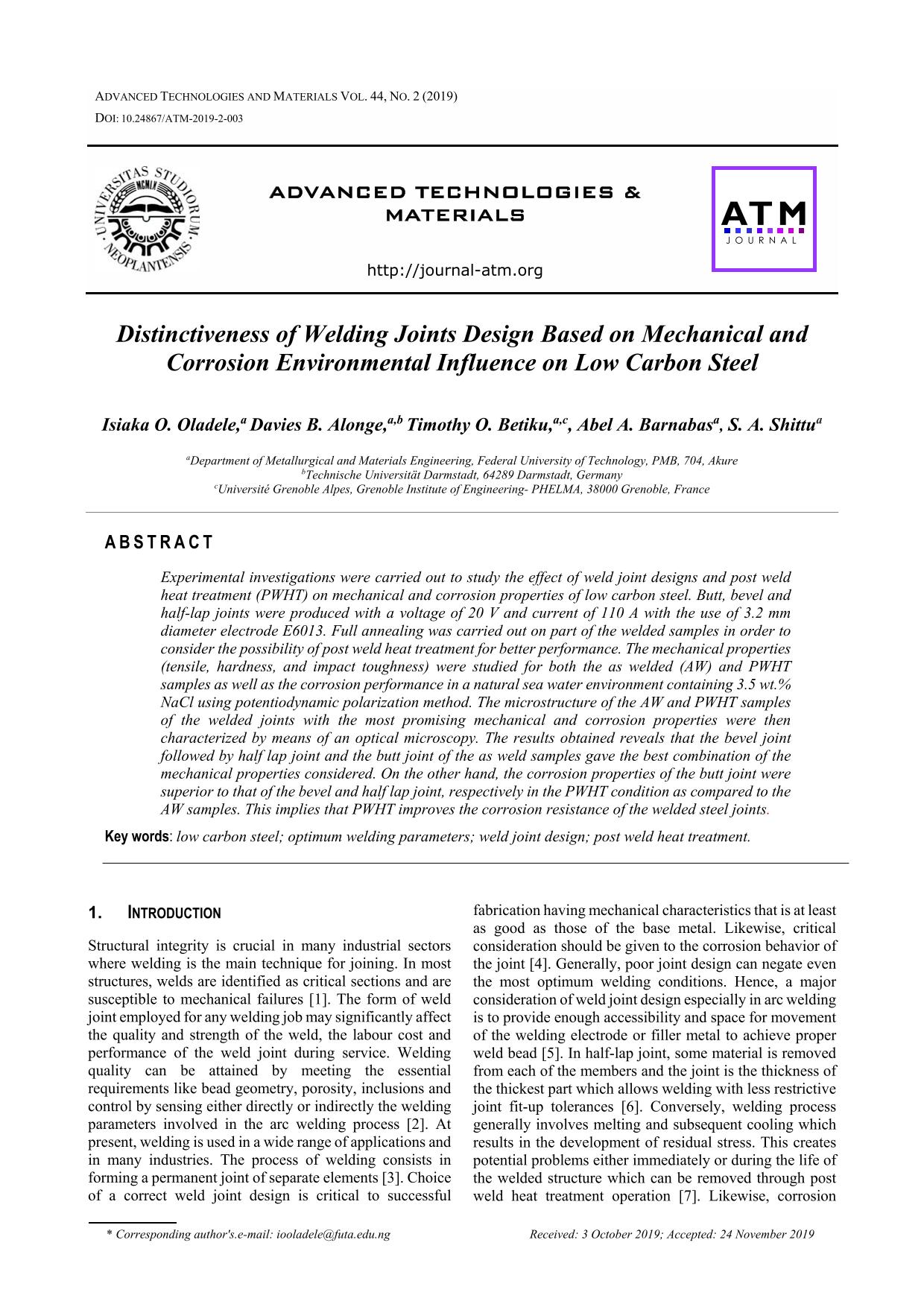Distinctiveness of Welding Joints Design Based on Mechanical and Corrosion Environmental Influence on Low Carbon Steel

Published 2023-09-30
abstract views: 36 // Full text article (PDF): 23
Keywords
- low carbon steel,
- optimum welding parameters,
- weld joint design,
- post weld heat treatment
How to Cite

This work is licensed under a Creative Commons Attribution 4.0 International License.
Abstract
Experimental investigations were carried out to study the effect of weld joint designs and post weld heat treatment (PWHT) on mechanical and corrosion properties of low carbon steel. Butt, bevel and half-lap joints were produced with a voltage of 20 V and current of 110 A with the use of 3.2 mm diameter electrode E6013. Full annealing was carried out on part of the welded samples in order to consider the possibility of post weld heat treatment for better performance. The mechanical properties (tensile, hardness, and impact toughness) were studied for both the as welded (AW) and PWHT samples as well as the corrosion performance in a natural sea water environment containing 3.5 wt.% NaCl using potentiodynamic polarization method. The microstructure of the AW and PWHT samples of the welded joints with the most promising mechanical and corrosion properties were then characterized by means of an optical microscopy. The results obtained reveals that the bevel joint followed by half lap joint and the butt joint of the as weld samples gave the best combination of the mechanical properties considered. On the other hand, the corrosion properties of the butt joint were superior to that of the bevel and half lap joint, respectively in the PWHT condition as compared to the AW samples. This implies that PWHT improves the corrosion resistance of the welded steel joints.

